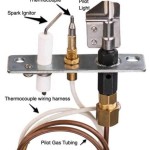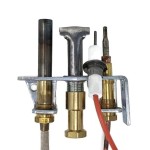How to Tile Over a Stone Fireplace
Tiling over a stone fireplace can dramatically update a room's aesthetic, transforming a rustic, sometimes dated, feature into a modern and stylish focal point. However, adhering tile directly to stone presents unique challenges compared to tiling over smoother surfaces like drywall or cement board. Proper preparation, material selection, and installation techniques are crucial for a successful and long-lasting result.
Before embarking on this project, careful consideration should be given to the existing stone fireplace. The type of stone, its condition, and its overall profile will influence the methods and materials required. Additionally, assessing the structural integrity of the fireplace is paramount. Any loose or crumbling stone must be addressed before proceeding.
Preparing the Stone Surface
Surface preparation is arguably the most vital step in tiling over stone. The goal is to create a clean, stable, and properly textured surface that promotes optimal adhesion of the tile adhesive, or thin-set mortar. Failure to adequately prepare the stone can lead to tile delamination and a compromised finished product.
The first step is to thoroughly clean the existing stone. Use a wire brush to remove any loose debris, dust, dirt, or soot. A pressure washer, used cautiously and with appropriate nozzle settings, can be effective for more ingrained grime. However, avoid excessively high pressure, which can damage softer stone types. After cleaning, allow the stone to dry completely for at least 24 hours.
Once the stone is dry, inspect it for any loose or unstable sections. Any severely damaged or protruding stones should be removed and replaced or repaired. Small cracks and chips can be filled with a suitable stone patching compound. Allow the patching compound to cure completely according to the manufacturer's instructions.
The next critical step involves creating a suitable bonding surface for the thin-set mortar. Because stone is often uneven and non-porous, it may not provide sufficient "keying" for the mortar to adhere properly. Several methods can improve adhesion. One common technique is to apply a scratch coat of modified thin-set mortar. This involves spreading a thin layer of mortar onto the stone surface and then "scratching" it with a notched trowel to create ridges and grooves. This increases the surface area and provides a better mechanical bond for the subsequent layer of mortar.
Another option is to use a bonding agent specifically designed for use with stone and tile. These agents are typically applied as a primer and create a chemically compatible surface for the mortar. Carefully follow the manufacturer's instructions for application and drying times. In some cases, applying a self-leveling compound may be necessary to create a perfectly flat surface, especially if the existing stone is significantly uneven. This step is crucial if larger format tiles are being used.
Selecting the Appropriate Materials
Choosing the right materials is essential for a durable and aesthetically pleasing outcome. The type of tile, thin-set mortar, grout, and sealant must be compatible with the stone and the intended use of the fireplace.
For tiling over stone fireplaces, modified thin-set mortar is generally recommended. Modified thin-set contains polymers that enhance its adhesion, flexibility, and water resistance. These properties are particularly important when tiling over stone, as it tends to expand and contract with temperature fluctuations. Look for a thin-set mortar specifically formulated for use with natural stone, as these often contain additives that prevent staining or discoloration.
The choice of tile is primarily aesthetic, but it's important to consider the weight of the tile. Heavy tiles can put undue stress on the stone surface and increase the risk of delamination. Lighter tiles, such as ceramic or porcelain, are generally preferable. Larger format tiles can minimize grout lines and create a more contemporary look, but they require a perfectly level substrate and careful installation.
Grout selection is also crucial. Choose a grout that is appropriate for the tile and the expected level of moisture exposure. Epoxy grout is highly durable and water-resistant, making it a good choice for areas that are frequently exposed to moisture. Cement-based grout is more porous but is generally easier to work with and less expensive. Regardless of the grout type, be sure to seal it properly to prevent staining and water damage.
Finally, select a sealant that is compatible with both the stone and the tile. A good sealant will protect the grout from staining and water damage and also help to prevent moisture from penetrating the stone itself.
Tile Installation Techniques
Proper tile installation techniques are crucial for achieving a professional and long-lasting result. Take the time to plan the layout, measure carefully, and use the correct tools and techniques.
Begin by dry-fitting the tiles to determine the optimal layout. This will help you avoid awkward cuts and ensure that the tiles are centered and symmetrical. Use tile spacers to maintain consistent grout lines. Mark the layout on the stone surface with a pencil.
Mix the thin-set mortar according to the manufacturer's instructions. Apply the mortar to the stone surface using a notched trowel. The size and shape of the notches will depend on the size and type of tile being used. Apply enough mortar to create a good bond with the tile, but avoid applying too much, which can make it difficult to set the tile properly.
Press the tile firmly into the mortar and twist slightly to ensure good contact. Use tile spacers to maintain consistent grout lines. Check the level of each tile with a level and make adjustments as necessary. Periodically wipe away any excess mortar from the tile surface with a damp sponge.
Allow the thin-set mortar to cure completely according to the manufacturer's instructions before grouting. Once the mortar is cured, remove the tile spacers and clean the grout lines. Mix the grout according to the manufacturer's instructions. Apply the grout to the tile surface using a grout float. Work the grout into the grout lines, making sure to fill them completely. Wipe away any excess grout from the tile surface with a damp sponge. Allow the grout to dry for the recommended amount of time, and then buff the tile surface with a clean cloth to remove any remaining grout residue.
Finally, apply a sealant to the grout lines to protect them from staining and water damage. Allow the sealant to dry completely before using the fireplace.
Tiling over a stone fireplace is a project that requires careful planning, meticulous preparation, and precise execution. By following these guidelines, and consulting with experienced professionals when needed, homeowners can successfully transform their fireplaces into stunning focal points.

How To Tile A Fireplace Even If It S Brick The Handyman Daughter

Secret To Tiling Over Tile Fireplace

Easy L And Stick Stone Fireplace Surround Sondra Lyn At Home

How To Install Stacked Stone Tile On A Fireplace Thrifty Decor Diy And Organizing

Read This Before Your Stone Fireplace Makeover Understanding Undertones

How To Tile A Brick Fireplace Jenna Kate At Home

Thin Stone Veneers Make A Fireplace Update Easy Swenson Granite 100 Natural Stones

How To Tile A Fireplace Even If It S Brick The Handyman Daughter

Tiling A Stacked Stone Fireplace Surround Bower Power

Stone Fireplace Surround 100 Things 2 Do
Related Posts








